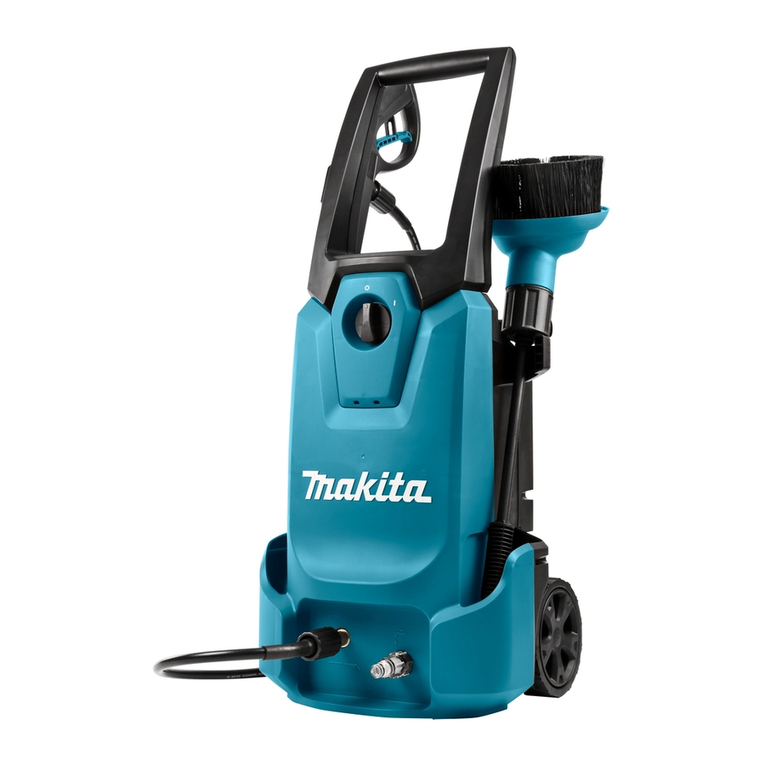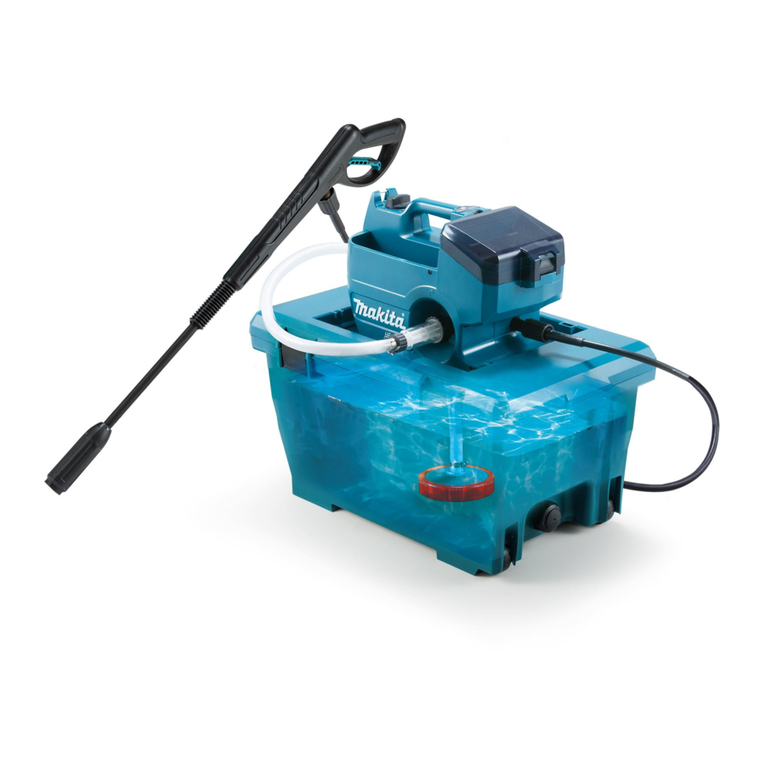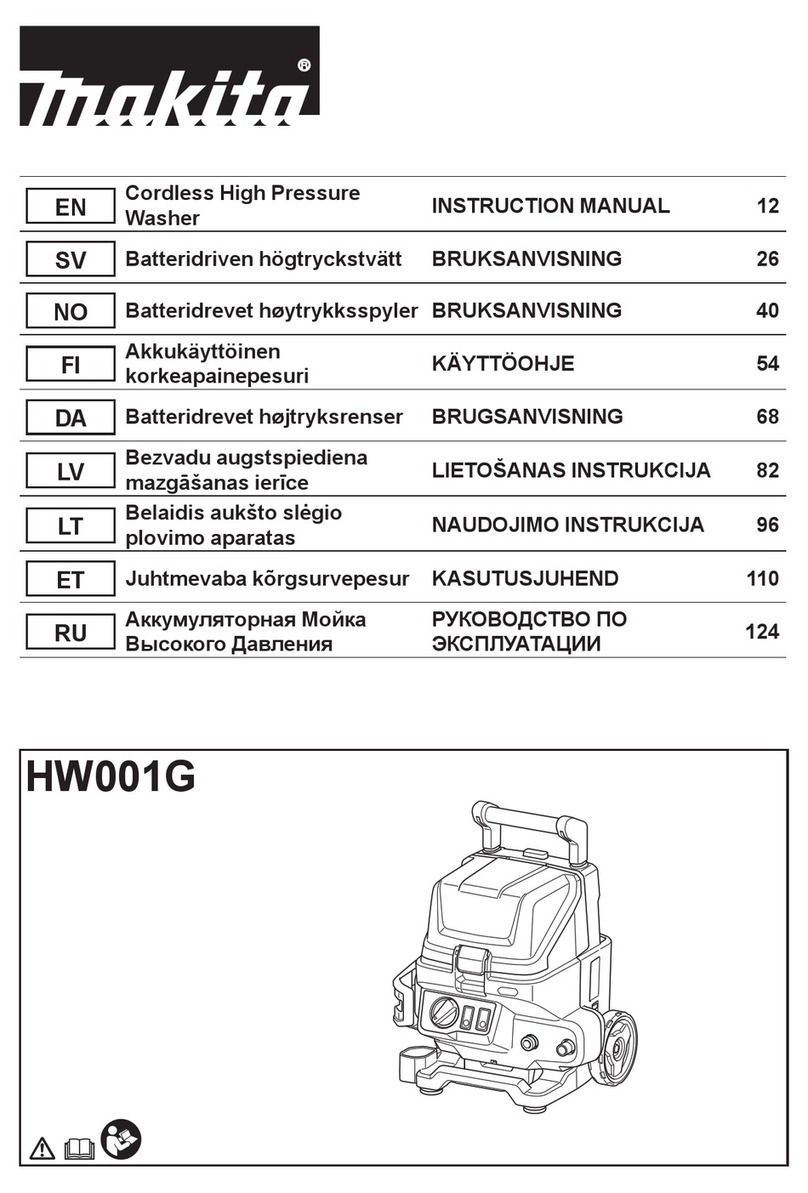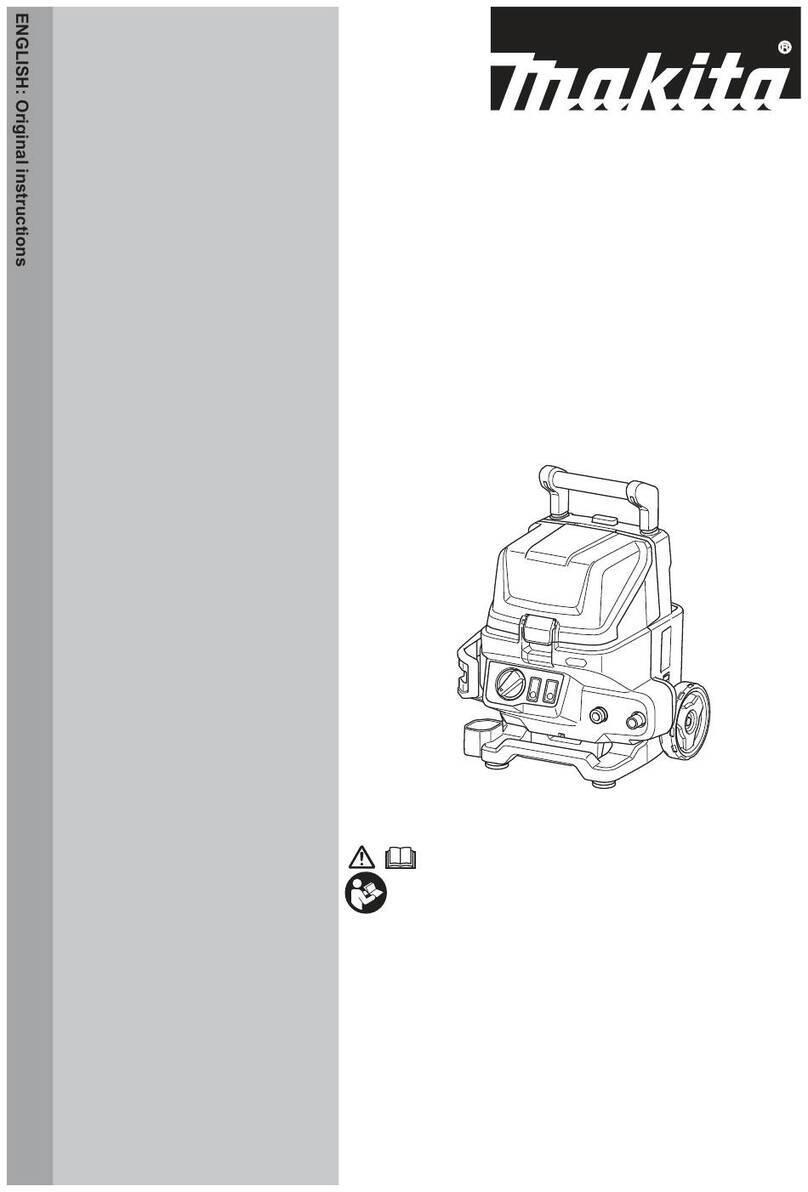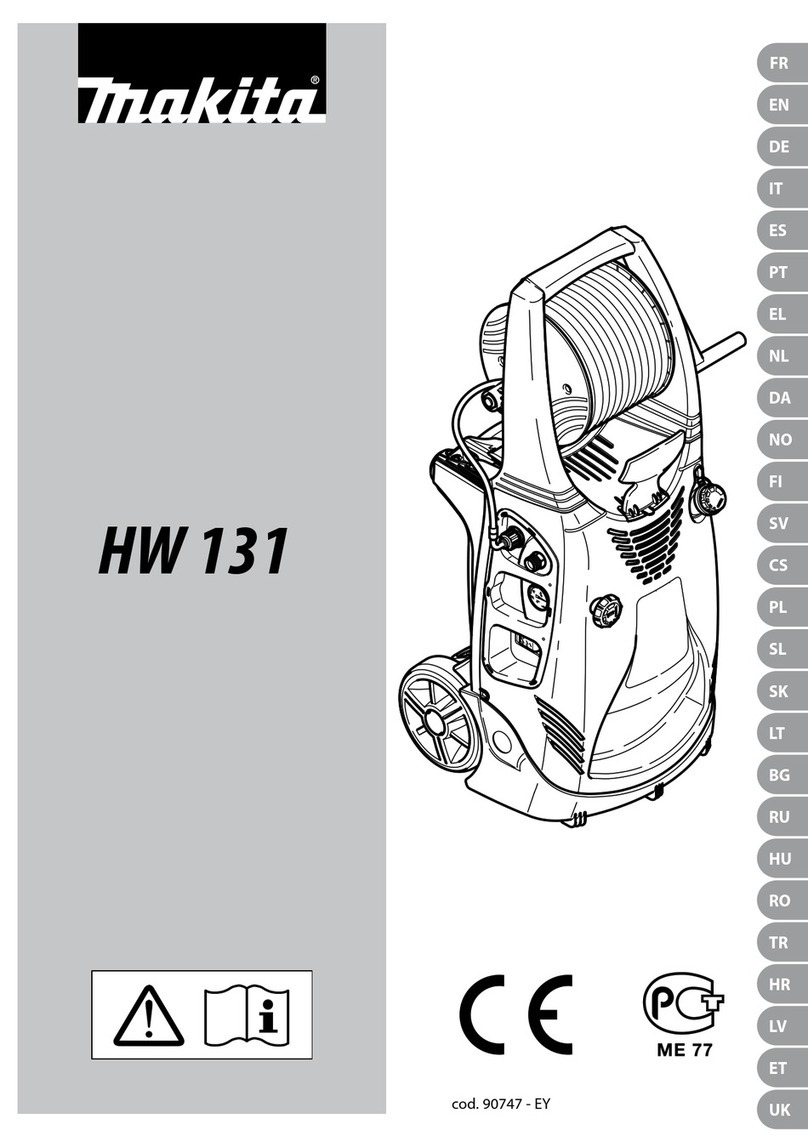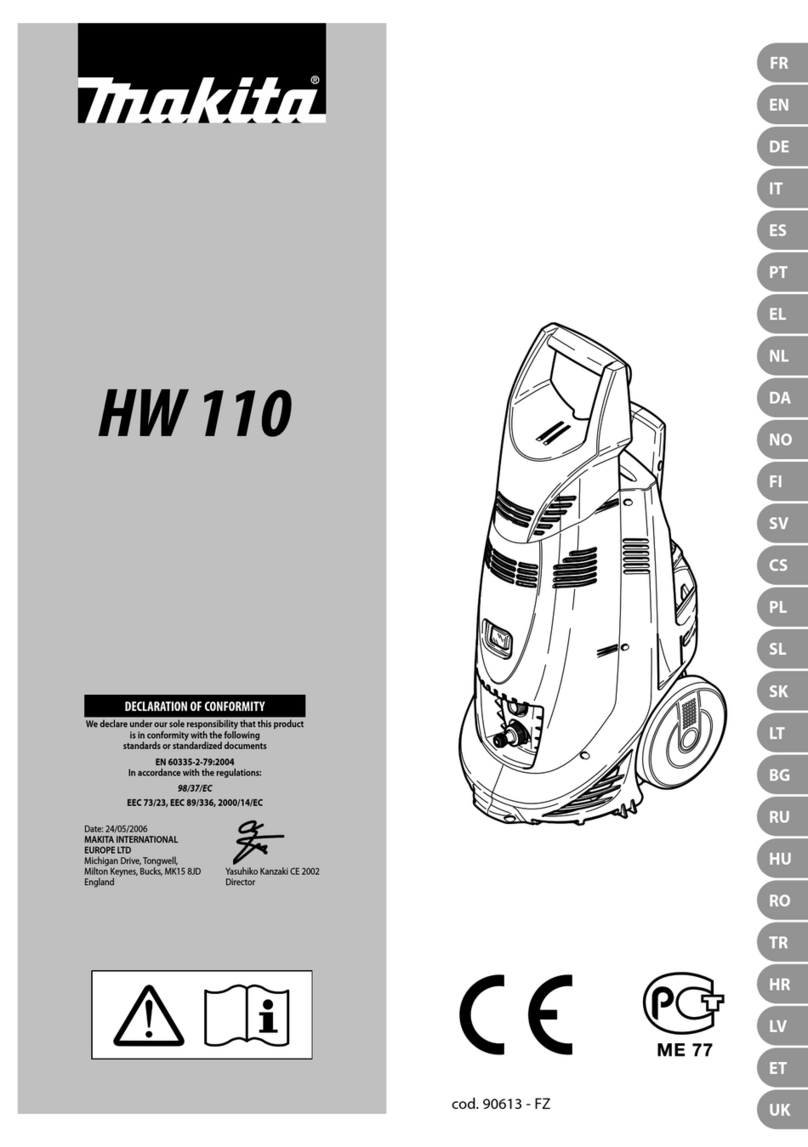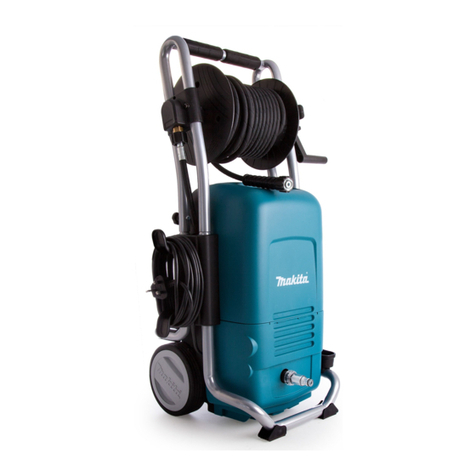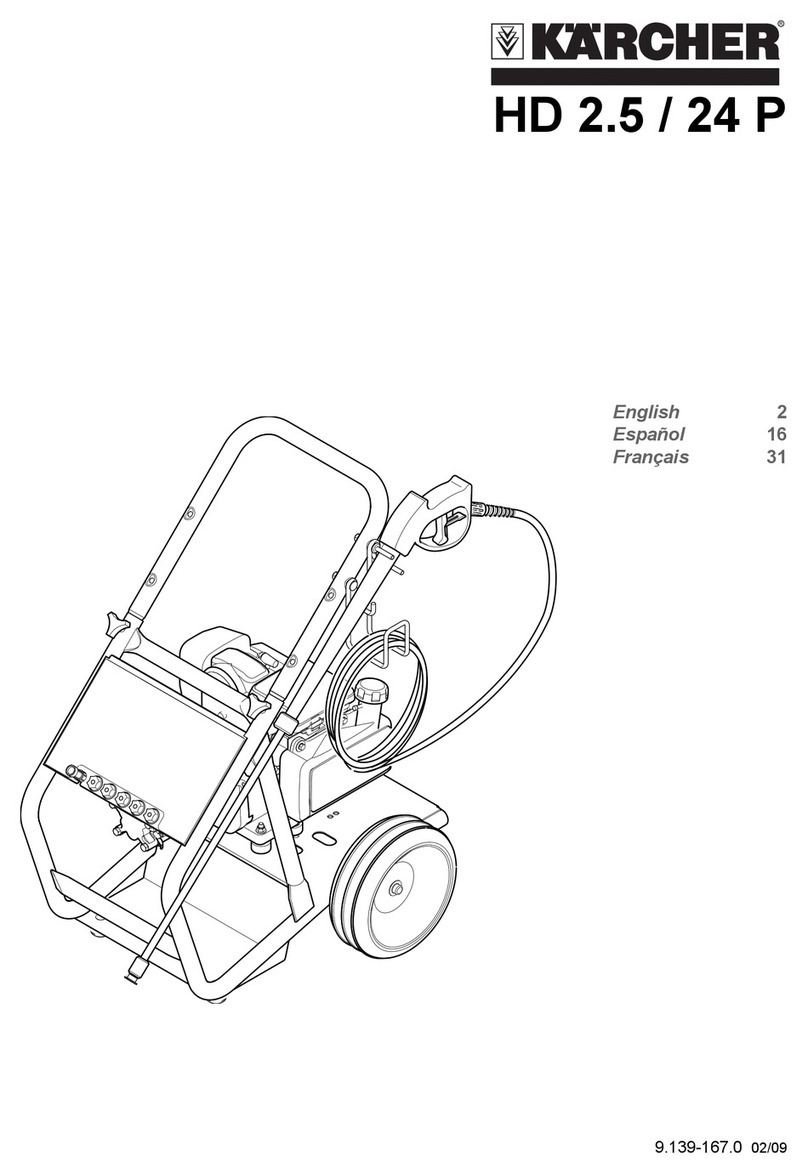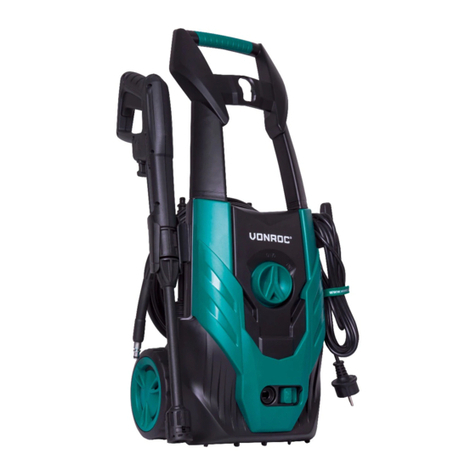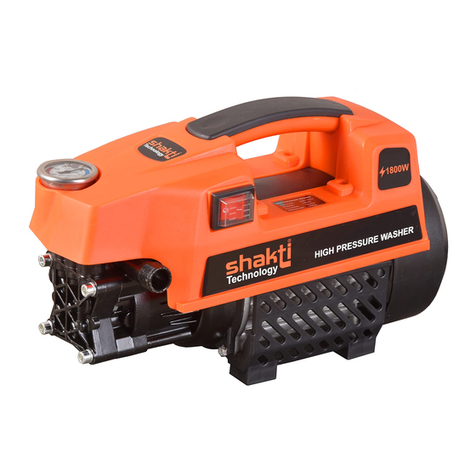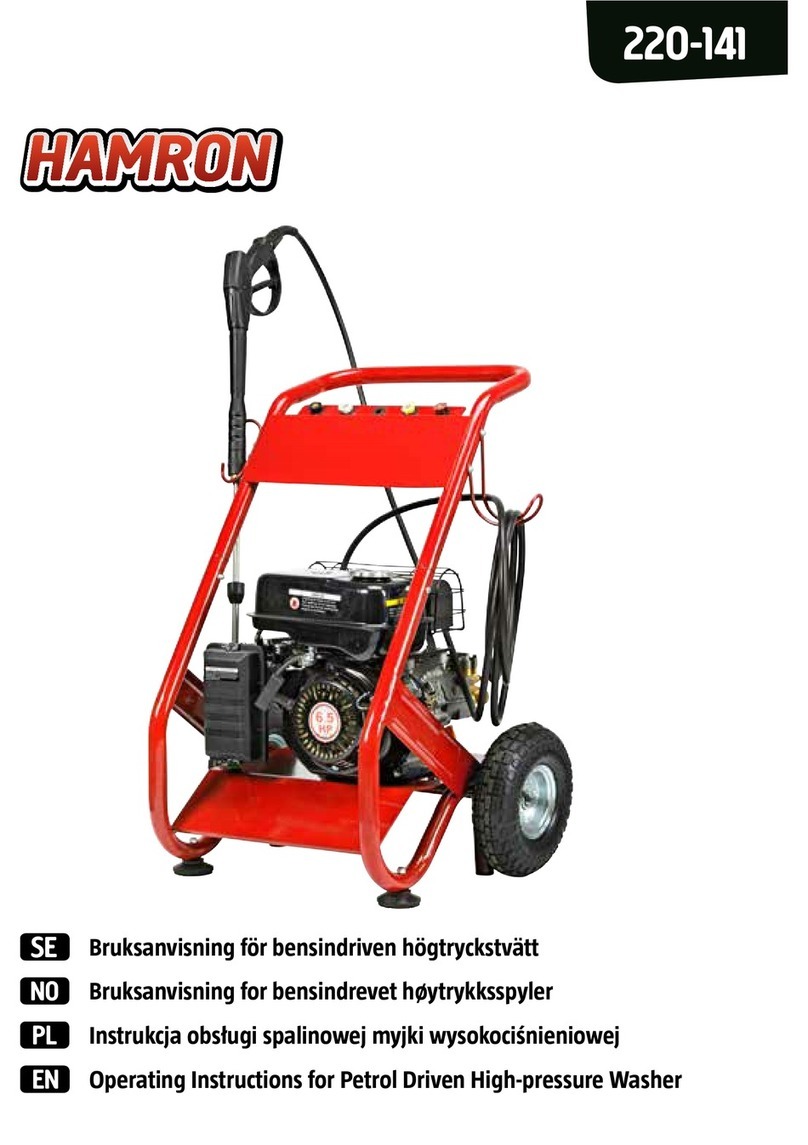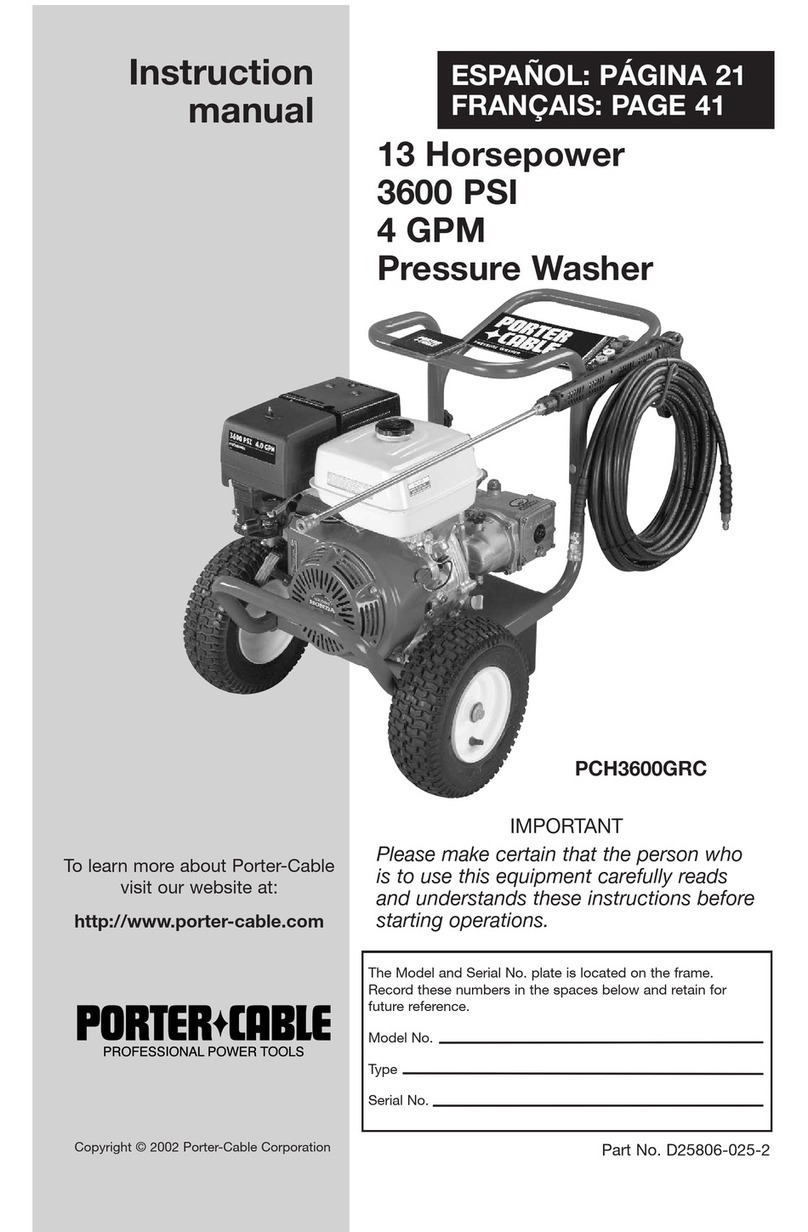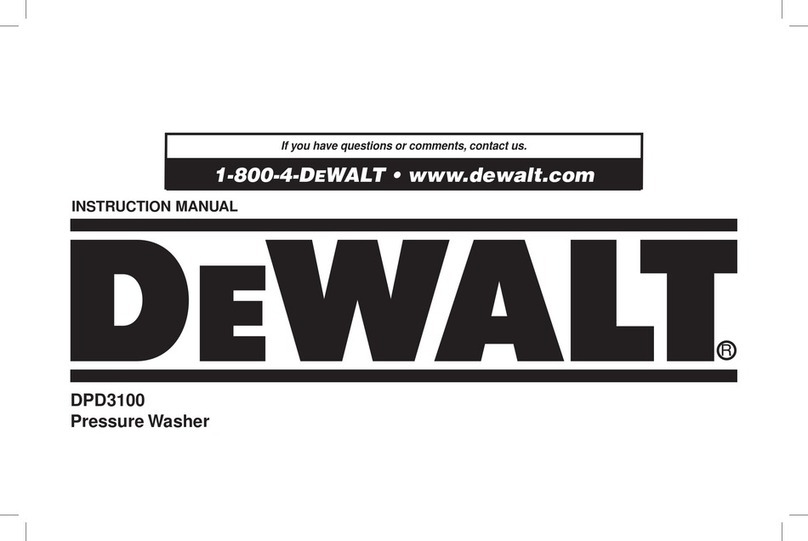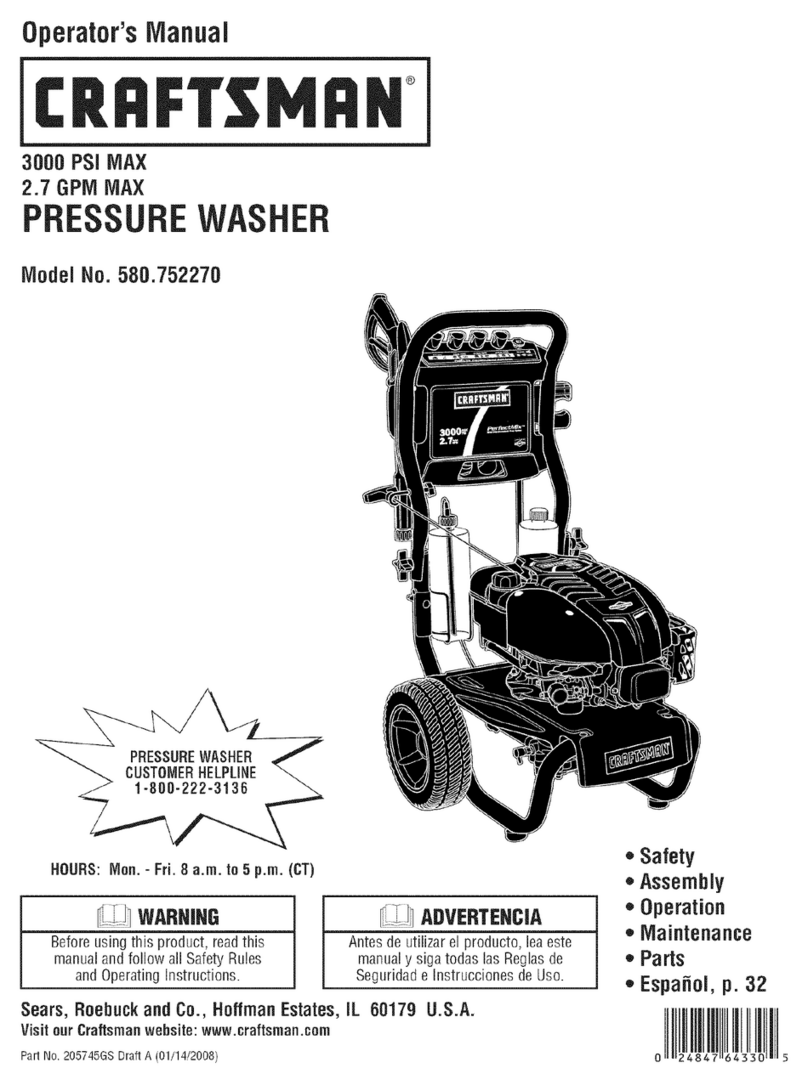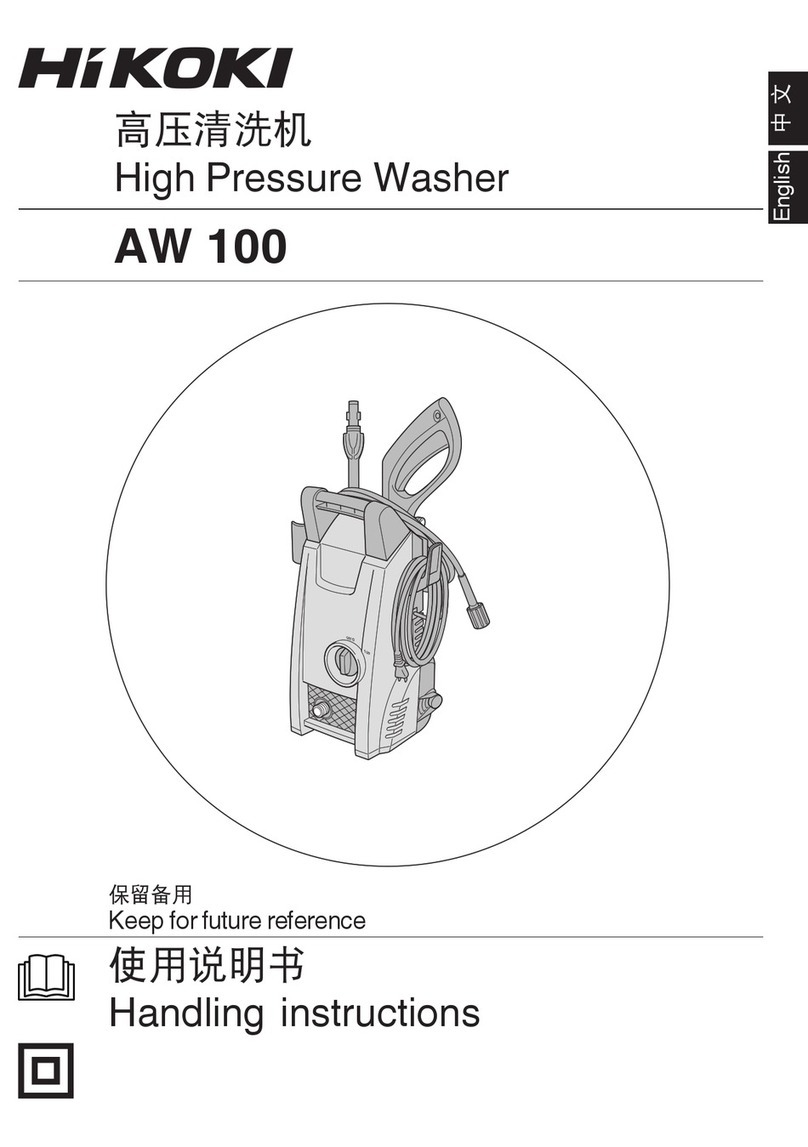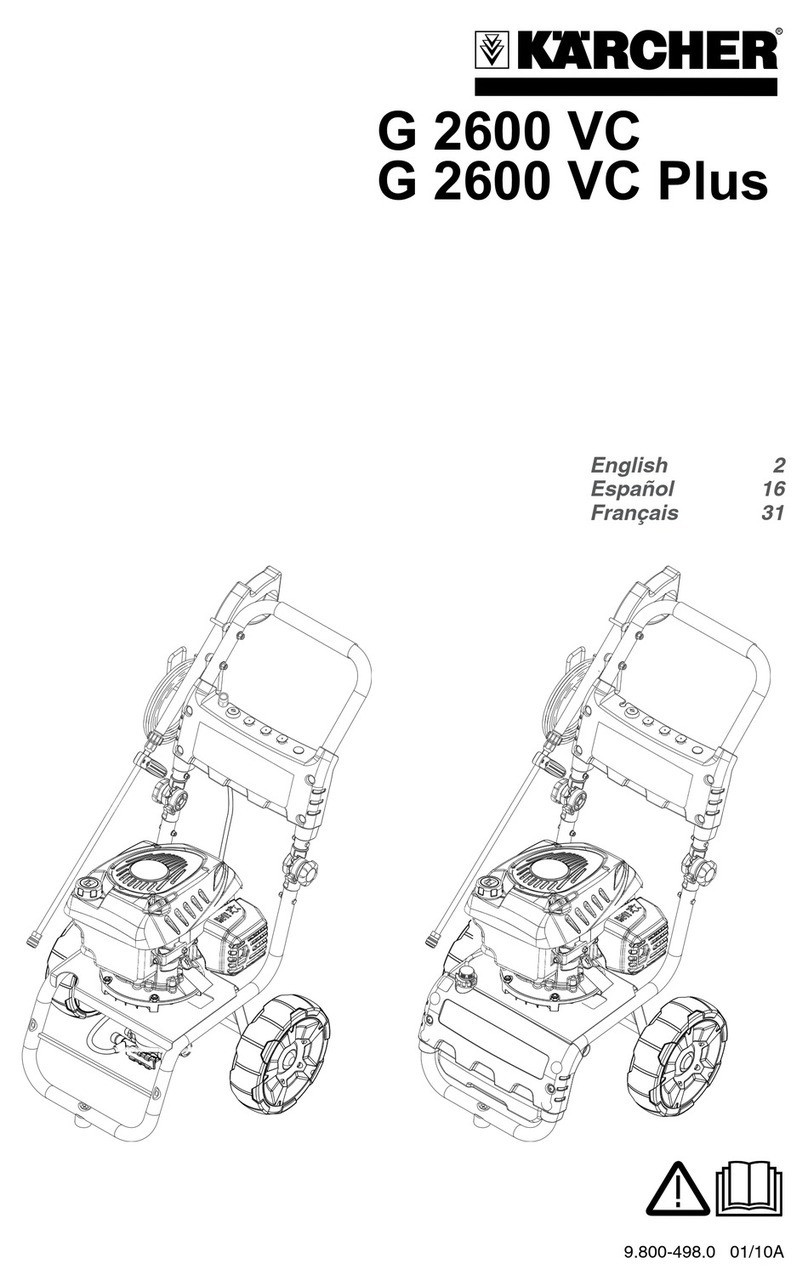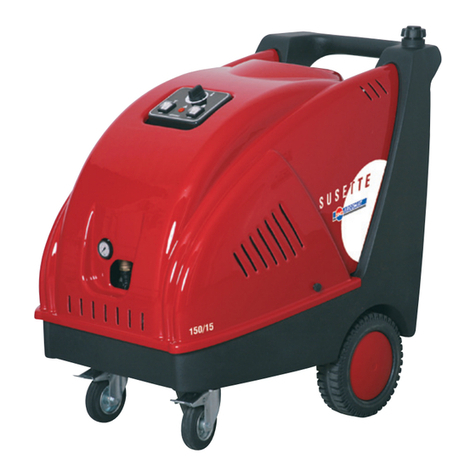
5ENGLISH
10. Keep handles dry, clean, and free of oil or
grease.
11. Stay alert – watch what you are doing.
12. Do not operate the product when fatigued or
under the inuence of alcohol or drugs.
13. Do not run the high pressure washer without
water for longer than one minute. It will dam-
age the motor, resulting in malfunction.
14. Always turn o the power and shut o the
water mains when leaving the high pressure
washer unattended.
15. Be wary of the kickback. The trigger gun
recoils when the high pressure jet is ejected
from the nozzle. Hold the trigger gun rmly to
prevent accidental injuries.
16. Check for damaged or worn parts before use.
Also make sure that the hose is properly con-
nected and there is no leakage during oper-
ation. Operating the machine with functional
defects may cause an accident.
17. This machine has been designed for use with
the cleaning agent supplied or recommended
by the manufacturer. The use of other cleaning
agents or chemicals may adversely aect the
safety of the machine.
18. Do not pull the hose to move the high pressure
washer body. This will damage the hose and
connecting parts and result in a short circuit
or functional defects.
19. Do not put heavy objects on the hose or let
vehicles drive over it.
20. Always discharge the residual pressure in the
trigger gun before disconnecting the hose.
21. When connecting the hose to the water mains,
observe the instructions of your local water-
works department or company.
22. If the high pressure washer is dropped or hits
against an hard object, be sure to check for
damage and crack. Using the high pressure
washer damaged may generate smoke, re, or
cause electric shock, which result in personal
injury.
23. During use of high pressure cleaners, aerosols
may be formed. Inhalation of aerosols can be
hazardous to health.
24. Depending on the application, shielded noz-
zles can be used for high pressure cleaning,
which will reduce the emission of hydrous
aerosols dramatically. However, not all appli-
cations allow the use of such a device. If
shielded nozzles are not applicable for the pro-
tection against aerosols, a respiratory mask
of class FFP 2 or equivalent may be needed,
depending on the cleaning environment.
25. The employer shall perform a risk assessment
in order to specify the necessary protective
measures regarding aerosols, depending on
the surface to be cleaned and its environment.
Respiratory masks of class FFP 2, an equiv-
alent or higher are suitable for the protection
against hydrous aerosols.
26. Prevent unintentional starting. Ensure the
switch is in the o-position before connecting
to battery pack, picking up or carrying the
appliance. Carrying the appliance with your nger
on the switch or energizing appliance that have
the switch on invites accidents.
27. Disconnect the battery pack from the appli-
ance before making any adjustments, chang-
ing accessories, or storing appliance. Such
preventive safety measures reduce the risk of
starting the appliance accidentally.
28. Do not modify or attempt to repair the appli-
ance or the battery pack except as indicated in
the instructions for use and care.
29. WARNING – Risk of Injection or Injury– Do Not
Direct Discharge Stream At Persons.
Battery tool use and care
1. Recharge only with the charger specied by
the manufacturer. A charger that is suitable for
one type of battery pack may create a risk of re
when used with another battery pack.
2. Use power tools only with specically desig-
nated battery packs. Use of any other battery
packs may create a risk of injury and re.
3. When battery pack is not in use, keep it away
from other metal objects, like paper clips,
coins, keys, nails, screws or other small metal
objects, that can make a connection from one
terminal to another. Shorting the battery termi-
nals together may cause burns or a re.
4. Under abusive conditions, liquid may be
ejected from the battery; avoid contact. If con-
tact accidentally occurs, ush with water. If
liquid contacts eyes, additionally seek medical
help. Liquid ejected from the battery may cause
irritation or burns.
5. Do not use a battery pack or tool that is dam-
aged or modied. Damaged or modied batteries
may exhibit unpredictable behaviour resulting in
re, explosion or risk of injury.
6. Do not expose a battery pack or tool to re or
excessive temperature. Exposure to re or tem-
perature above 130 °C may cause explosion.
7. Follow all charging instructions and do not
charge the battery pack or tool outside the
temperature range specied in the instruc-
tions. Charging improperly or at temperatures
outside the specied range may damage the
battery and increase the risk of re.
Service
1. Follow the maintenance instructions specied
in the manual.
2. To ensure machine safety, use only original
spare parts from the manufacturer or approved
by the manufacturer.
3. Have your high pressure washer serviced by
a qualied repair person using only identi-
cal replacement parts. This will ensure that
the safety of the high pressure washer is
maintained.
4. In case of breakdown or malfunction of the
high pressure washer, immediately switch
it o and remove the battery cartridge(s).
Contact your local dealer or service center.

